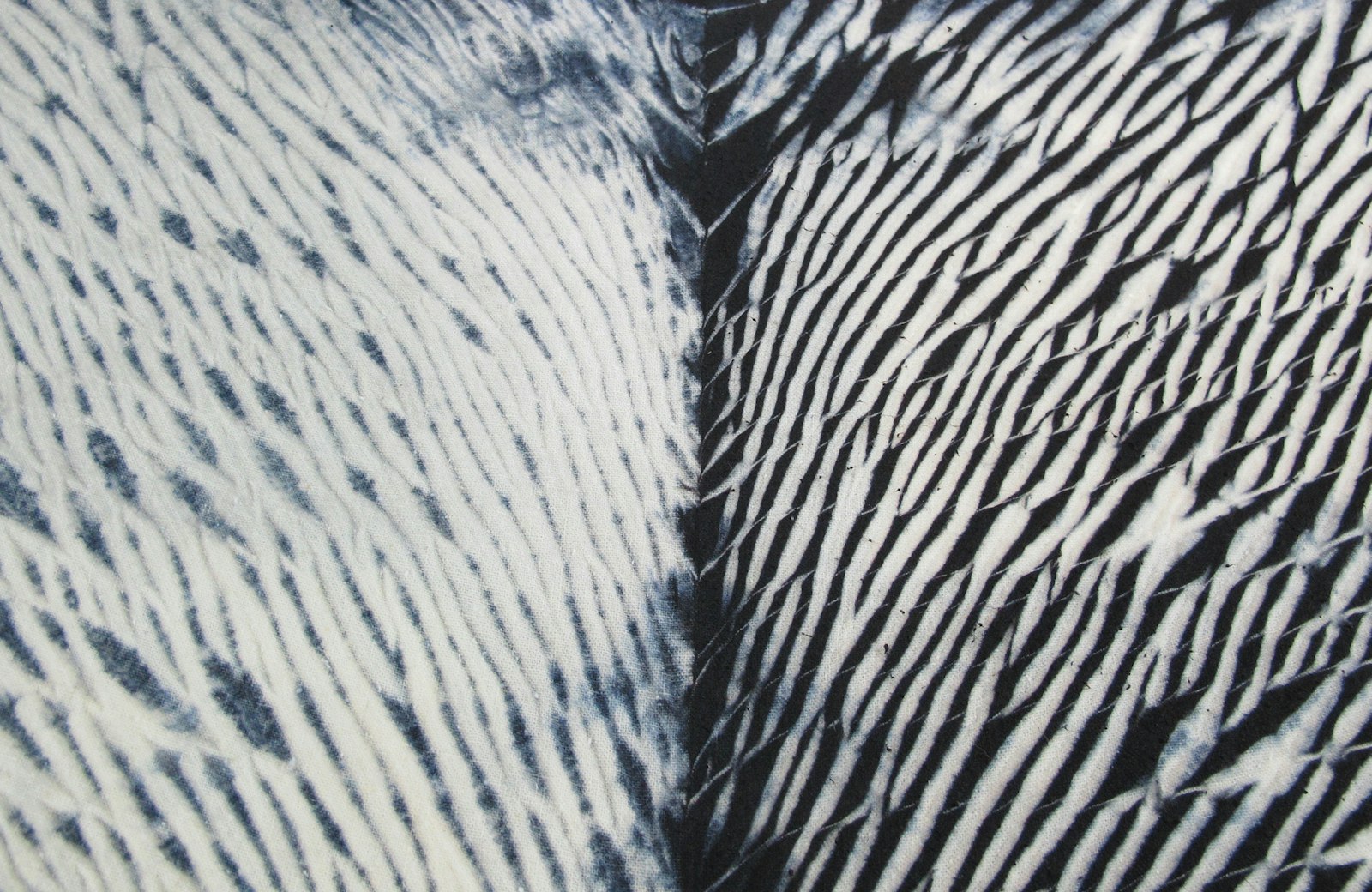Whenever possible, I try to enjoy my fiber arts in a way that's as low-impact on the environment as possible. Dyes and the dyeing process tend to be particularly fraught with environmental problems, and they also pose significant safety risks to the artist! This is why I am so excited about the new video Natural Shibori: Arashi by Elizabeth McTear.
Elizabeth says, "I started to work with natural dyes about seven years ago in an effort to better align my practice with my environmental goals." In her new video, she'll teach you about a dye and a dye process that is as safe as possible for you, the environment, and the fabric you're dyeing—without sacrificing color intensity, light- and washfastness, or the ability to mix dyes to create your own shades.
Best of all, you'll learn the basics of a shibori technique with endless possible variations: arashi. Before you get started, here are some tips to ensure your dyeing experimentation is as safe as possible for you, the environment, and any precious handwovens you might wish to dye!
Use Non-Toxic, Low-Impact Dyes
Elizabeth uses a brand of acid dye called Greener Shades in her video. These dyes are processed in a manner that’s compliant with the Organic Trade Association’s criteria. That means they are free of heavy metals, including chromium, which are found in most other acid dyes. Chromium is highly toxic when ingested or inhaled, irritates the skin, and can pollute groundwater when you dispose of your dye.
Using a dye like Greener Shades can dramatically reduce the environmental impact of your shibori dyeing, and also make it safer for you!
It’s fun to experiment with dyes made from plants, too, especially if you grow the dye plants yourself. Common natural plant dyes include weld, madder, and fustic, as well as indigo, the king of plant-based dyes. Other natural dyes are made from insects, such as cochineal.
Use Proper Safety Gear During Shibori Dyeing
Even when using non-toxic dyes, it’s never good for your body to inhale particulates. Keep your respiratory system safe by always dyeing in a well-ventilated (but not windy!) area. Wear a mask that covers your nose and mouth the entire time you’re working with dye in powdered form. You can also wear safety goggles to protect your eyes.
Protect Your Fabric
Experiment with dyeing handwovens! A twill, for example, could produce interesting shibori results. Silk and wool can both become brittle if the pH is too acidic, so it’s important to test the acidity of your dye bath with pH strips. Elizabeth will walk you through it in her video.
Exhaust Your Dye Bath When Finished
Non-toxic dyes are easier on the environment than chromium-laden dyes, but it’s still important to exhaust the dye bath by "clearing it out" before disposal.
Elizabeth will show you how to do this safely in the video, so you can minimize your impact on the environment. You should never just dispose of active dye down the drain.
Now that you’re ready to experiment safely, it’s time to dive into the different techniques of shibori! Why not start with arashi shibori, the technique of wrapping sheets of cloth around a pole or pipe to create dye resist marks? It results in gorgeous striped patterning, which is where the technique gets its name. “Arashi” means “storm” in Japanese, and the patterning reminded them of wind-driven rain.
In Natural Shibori: Arashi, you'll learn how to create a variety of different arashi shibori patterning. Here's Elizabeth demonstrating one technique for wrapping and tying your cloth.
—Andrea
-

